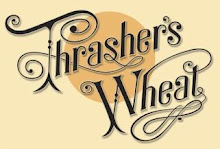A&E Biography of Neil Young

The airing of the premiere of the A&E cable channel Biography of Neil Young was not exactly prime time. Try 10:00 AM on a Sunday morning. Oh well. You can't exactly expect to find "rock's ultimate survivor" on during family hour.
Nonetheless, as expected, the A&E Biography was certain to both please and disappoint the fans. First off, the positives.
A&E interviewed what are definitely considered to be Neil experts:




biographer Jimmy McDonough, author Dave Zimmer, author Ken Viola, Neil historian John Einarson.
Without a doubt, these guys know their Neil history. The program script was factually correct and relatively straightforward.
There were some rare photos which was nice.


But obviously, Neil did not cooperate with the program and there was little background music variety and live footage. The principle performance footage consisted of the music video of "Rockin' In The Free World" and Neil's appearance at the Winnipeg Reunion "Shakin All Over".

The emphasis was on Neil's early years and the first half of the segment was the best focusing on the Canadian Years and The Buffalo Springfield era.
This gave author John Einarson the opportunity to tell some of his wonderful stories about the Squires, Rick James and The Mynah Birds, and Randy Bachman. Good stuff.

Ken Viola had the best quote on listening to Crazy Horse live just after the recording of the album "Everybody Knows This is Nowhere":
"Like standing at the top of the highest mountain on the most beautiful day and hearing the wind blowing, air so pure that it hurts to breathe."
"Shakey" biographer Jimmy McDonough dominated the program, with material from his book and several innnaresting anecdotes.
As for criticism, I can't say I'm in disagreement -- like many others before -- about some of the techniques that the A&E Biography series employs such as "scene recreations" intermixed with stock footage. I was particularly troubled by the scene about Neil contracting polio at the age of six. A&E gives us a re-enactment of a small boy clutching his shoulder with blurry hand held footage and then intercuts archival photos of polio wards and then back to a photo of Neil. I'm really apalled by this technique because it makes Michael Moore's "Fahrenheit 9/11" look like it was produced by Edward R. Murrow.
Thankfully, this sort of creative license was used sparingly but clearly the show's producers were challenged and used all sorts of bizarre edits. Lots of punk audience footage was edited in with little relation to the time frame or narration as if to imply these were Neil's fans during the late 1970's.
The program raced through much of the 70's, 80's , 90's & 00's as if not much really happened. Oh well, maybe when Neil chooses to cooperate with a more serious effort we'll get a more balanced portrait.
The good folks on RUST blasted the program for it's numerous factual errors and poor editing. All of the A&E Bio slamming led a Rustie to comment that they were "glad they didn't have cable."
Still, all in all, the interviews with the Neil historians McDonough, Einarson, Viola,and Zimmer were definitely worth the price of admission.

(Thanks Bill L. for the heads up on the program!)
For more, see Dave Zimmer's Neil Young Biography.




































 Concert Review of the Moment
Concert Review of the Moment







![[EFC Blue Ribbon - Free Speech Online]](http://www.thrasherswheat.org/gifs/free-speech.gif)











 Submit Your Neil Links Now!
Submit Your Neil Links Now!























 Four Dead in Ohio
Four Dead in Ohio














